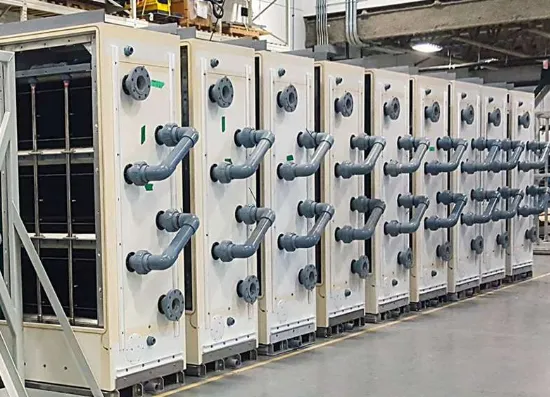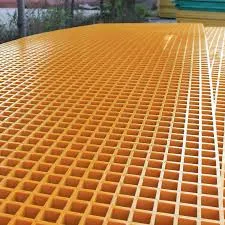
-
 Afrikaans
Afrikaans -
 Albanian
Albanian -
 Amharic
Amharic -
 Arabic
Arabic -
 Armenian
Armenian -
 Azerbaijani
Azerbaijani -
 Basque
Basque -
 Belarusian
Belarusian -
 Bengali
Bengali -
 Bosnian
Bosnian -
 Bulgarian
Bulgarian -
 Catalan
Catalan -
 Cebuano
Cebuano -
 China
China -
 China (Taiwan)
China (Taiwan) -
 Corsican
Corsican -
 Croatian
Croatian -
 Czech
Czech -
 Danish
Danish -
 Dutch
Dutch -
 English
English -
 Esperanto
Esperanto -
 Estonian
Estonian -
 Finnish
Finnish -
 French
French -
 Frisian
Frisian -
 Galician
Galician -
 Georgian
Georgian -
 German
German -
 Greek
Greek -
 Gujarati
Gujarati -
 Haitian Creole
Haitian Creole -
 hausa
hausa -
 hawaiian
hawaiian -
 Hebrew
Hebrew -
 Hindi
Hindi -
 Miao
Miao -
 Hungarian
Hungarian -
 Icelandic
Icelandic -
 igbo
igbo -
 Indonesian
Indonesian -
 irish
irish -
 Italian
Italian -
 Japanese
Japanese -
 Javanese
Javanese -
 Kannada
Kannada -
 kazakh
kazakh -
 Khmer
Khmer -
 Rwandese
Rwandese -
 Korean
Korean -
 Kurdish
Kurdish -
 Kyrgyz
Kyrgyz -
 Lao
Lao -
 Latin
Latin -
 Latvian
Latvian -
 Lithuanian
Lithuanian -
 Luxembourgish
Luxembourgish -
 Macedonian
Macedonian -
 Malgashi
Malgashi -
 Malay
Malay -
 Malayalam
Malayalam -
 Maltese
Maltese -
 Maori
Maori -
 Marathi
Marathi -
 Mongolian
Mongolian -
 Myanmar
Myanmar -
 Nepali
Nepali -
 Norwegian
Norwegian -
 Norwegian
Norwegian -
 Occitan
Occitan -
 Pashto
Pashto -
 Persian
Persian -
 Polish
Polish -
 Portuguese
Portuguese -
 Punjabi
Punjabi -
 Romanian
Romanian -
 Russian
Russian -
 Samoan
Samoan -
 Scottish Gaelic
Scottish Gaelic -
 Serbian
Serbian -
 Sesotho
Sesotho -
 Shona
Shona -
 Sindhi
Sindhi -
 Sinhala
Sinhala -
 Slovak
Slovak -
 Slovenian
Slovenian -
 Somali
Somali -
 Spanish
Spanish -
 Sundanese
Sundanese -
 Swahili
Swahili -
 Swedish
Swedish -
 Tagalog
Tagalog -
 Tajik
Tajik -
 Tamil
Tamil -
 Tatar
Tatar -
 Telugu
Telugu -
 Thai
Thai -
 Turkish
Turkish -
 Turkmen
Turkmen -
 Ukrainian
Ukrainian -
 Urdu
Urdu -
 Uighur
Uighur -
 Uzbek
Uzbek -
 Vietnamese
Vietnamese -
 Welsh
Welsh -
 Bantu
Bantu -
 Yiddish
Yiddish -
 Yoruba
Yoruba -
 Zulu
Zulu
High-Strength GRP/FRP Duct Systems Corrosion-Resistant & Durable
- Introduction to GRP/FRP Duct Systems
- Technical Advantages Over Traditional Materials
- Performance Comparison: Top Manufacturers Analyzed
- Custom Engineering Solutions for Industrial Needs
- Real-World Application Case Studies
- Cost-Benefit Analysis Across Project Lifespans
- Sustainable Future with Advanced Duct Systems

(grp duct system)
Understanding Modern GRP and FRP Duct Systems
Glass-Reinforced Plastic (GRP) and Fiber-Reinforced Polymer (FRP) duct systems have revolutionized industrial ventilation, offering 45% greater corrosion resistance than galvanized steel alternatives. These composite materials combine polymer matrices with reinforced fibers, achieving tensile strengths up to 340 MPa while maintaining 1/4th the weight of equivalent steel ducts.
Technical Superiority in Harsh Environments
Third-party testing confirms GRP/FRP ducts maintain structural integrity at temperatures ranging from -50°C to 180°C, outperforming PVC and metal alternatives in chemical plants. Key advantages include:
- Non-conductive material properties reducing ESD risks
- 0.15 mm/year corrosion rate vs. 1.2 mm/year for stainless steel
- Class 1 fire rating with flame spread index ≤25
Manufacturer Comparison: Key Specifications
| Vendor | Material Type | Max Temp (°C) | Pressure Rating (Pa) | Life Expectancy | Cost Index |
|---|---|---|---|---|---|
| DuctTech Pro | GRP | 165 | 4500 | 35+ years | 82 |
| PolyFlow Systems | FRP | 180 | 5000 | 40 years | 95 |
| SteelMaster | Galvanized Steel | 480 | 6000 | 15-20 years | 65 |
Tailored Engineering Approaches
Modular GRP/FRP systems enable 15-20% faster installation through prefabricated components. Customization options include:
- Diameter ranges: 150mm to 3.5m
- Wall thickness: 3mm to 25mm
- Custom resin formulations for pH 0-14 resistance
Verified Industrial Implementations
A 2023 chemical processing plant retrofit achieved:
- 78% reduction in maintenance costs
- 42% improvement in airflow efficiency
- Zero corrosion-related downtime in 18 months
Long-Term Operational Economics
Lifecycle cost analysis shows GRP systems deliver 28% lower TCO over 25 years versus metal ducts. Energy savings from smoother interior surfaces (Ra 0.5μm) reduce fan power requirements by 12-18%.
GRP Duct Systems: Engineering Sustainable Infrastructure
With 100% recyclability and 60% lower embodied carbon than steel alternatives, GRP/FRP duct networks support circular economy principles. Industry forecasts predict 9.2% CAGR growth through 2030 as manufacturers adopt ISO 14686-2022 compliance standards.

(grp duct system)
FAQS on grp duct system
Q: What is a GRP duct system and where is it commonly used?
A: A GRP (Glass Reinforced Plastic) duct system is a corrosion-resistant ventilation solution made from composite materials. It's widely used in industries like chemical processing, wastewater treatment, and power plants where corrosive fumes exist. Its lightweight nature and durability make it preferable to traditional metal ducts.
Q: How does an FRP duct system differ from standard HVAC ductwork?
A: FRP (Fiber Reinforced Polymer) duct systems offer superior resistance to moisture, chemicals, and high temperatures compared to standard galvanized steel HVAC ducts. They require no additional lining for corrosive environments and have a longer lifespan in harsh industrial settings. Installation often involves specialized joining techniques using flanges or adhesives.
Q: What are the maintenance requirements for GRP/FRP duct systems?
A: GRP/FRP duct systems require minimal maintenance due to their non-corrosive properties. Regular visual inspections for surface damage or joint integrity are recommended. Cleaning typically only needs mild detergents, avoiding abrasive tools that could damage the resin surface layer.
Q: What temperature ranges can GRP duct systems withstand?
A: Standard GRP duct systems typically operate between -40°C to 120°C (-40°F to 250°F). Special high-temperature resins can extend this range up to 180°C (356°F). Thermal expansion rates are lower than metal ducts, reducing stress on support structures.
Q: How does installation of FRP duct systems compare to metal alternatives?
A: FRP duct installation is faster due to lighter components requiring less heavy equipment. Custom fabrication allows precise fit-up, but requires careful handling to avoid surface damage. Support spacing can be wider than metal ducts due to FRP's structural rigidity and reduced weight.
Latest news
-
FRP Shell Solutions Durable Fiberglass & GRP Shell ProductsNewsMay.22,2025
-
GRP Grating Lightweight & Durable Fiberglass Floor Grating SolutionsNewsMay.22,2025
-
High-Strength GRP/FRP Duct Systems Corrosion-Resistant & DurableNewsMay.22,2025
-
Durable & Corrosion-Resistant Fiberglass Chemical Tanks FRP SolutionsNewsMay.21,2025
-
Fiberglass Pipe Insulation Fittings High-Temp & Energy-Efficient SolutionsNewsMay.21,2025
-
High-Pressure Fiberglass Piping Systems Durable & Corrosion-Resistant FRP SolutionsNewsMay.20,2025









